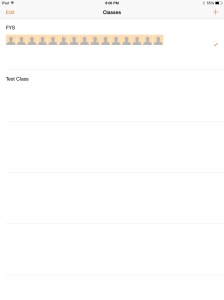
One aspect of my Tech Fellows project has involved using Quizlet.com in two of my courses, AHI/ARC 103 CC: Building Culture and AHI 277: 20th Century Architecture and Design. Students in both of these classes take periodic “slide quizzes” in which I give them a list of 20 or so buildings to learn, memorize, and identify. In the past, the students were responsible for making flashcards of images and architectural drawings and memorizing the identification information. This was always a bit of a challenge for students, as they needed to take images from the pdfs of my powerpoints posted on Moodle and then print the images to make flashcards. I always saw this as a bit daunting of a task, but it seemed somewhat easier than the way I had to make flashcards in college, which involved photocopying images from books.
During Tempel Summer Institute last year, I decided to re-think the resources I provided for students to study for these quizzes. With the help of Laura Little, I found that Quizlet.com would be a great solution. What I found most advantageous about the website was that I could give the students the images I wanted them to learn, which meant that more emphasis could be placed on plans and sections, which students struggled with the most in the past.
Quizlet.com is available for free to teachers and students. I opted to sign up for a one year-subscription, which enabled me to upload images to my study sets and view student progress. Using Quizlet is very simple and I have additionally found that many students are using the website for other courses or are creating study sets for their own use. Another feature of Quizlet is their mobile app, which allows students to study on their phones and tablets.
Having used this website for two courses this year, I have found that students’ quiz grades are higher, there has been less anxiety over studying for the quizzes, and I am able to track students’ progress. I have also been able to achieve one of my main pedagogical aims for the courses – having students gain greater fluency with reading architectural plans, sections, and elevations.
Here are a couple of images of my study sets for AHI/ARC 103 CC: Building Culture:

able to provide images that supplemental the definition of each term.

students to match terms or building identification with their definition or associate
images. Students have commented on how helpful this feature is in the initial stages of studying.















